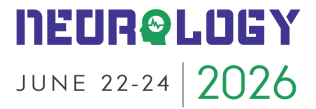Deep Learning and Neural Networks
Deep learning and neural networks, a branch of machine learning, employs neural networks modeled after the structure of the human brain. These networks consist of interconnected nodes organized in layers, enabling the extraction of intricate patterns from data. Through training, neural networks learn to make predictions by adjusting internal parameters based on input-output examples. Deep learning has revolutionized various domains like computer vision, natural language processing, and speech recognition. Convolutional neural networks excel in tasks such as image classification and object detection, while recurrent neural networks are proficient in sequence modeling, including language translation and time series prediction. Advancements in computational hardware and the availability of large-scale datasets have propelled the adoption of deep learning. Open-source frameworks like TensorFlow and PyTorch have further democratized its application. Despite its successes, challenges persist, including the need for extensive labeled data and the interpretability of complex models. Ethical concerns also arise regarding fairness, bias, and security. Nevertheless, ongoing research aims to address these challenges and enhance deep learning's capabilities. As the field progresses, deep learning is poised to play a pivotal role in shaping the future of artificial intelligence, driving innovation across various sectors and advancing human understanding and capabilities.

Ken Ware
NeuroPhysics Therapy Institute, Australia
Robert B Slocum
University of Kentucky HealthCare, United States
Yong Xiao Wang
Albany Medical College, United States
W S El Masri
Keele University, United Kingdom
Jaqueline Tuppen
COGS Club, United Kingdom
Milton Cesar Rodrigues Medeiros
Hospital Santa Casa de Arapongas, Brazil




Title : Perception and individuality in patient cases identifying the ongoing evolution of Myalgic Encephalomyelitis/Chronic Fatigue Syndrome (ME/CFS)
Ken Ware, NeuroPhysics Therapy Institute, Australia
Title : Narrative medicine: A communication therapy for the communication disorder of Functional Seizures (FS) [also known as Psychogenic Non-Epileptic Seizures (PNES)]
Robert B Slocum, University of Kentucky HealthCare, United States
Title : Personalized and Precision Medicine (PPM), as a unique healthcare model through biodesign-driven biotech and biopharma, translational applications, and neurology-related biomarketing to secure human healthcare and biosafety
Sergey Victorovich Suchkov, N.D. Zelinskii Institute for Organic Chemistry of the Russian Academy of Sciences, Russian Federation
Title : Neuro sensorium
Luiz Moutinho, University of Suffolk, United Kingdom
Title : Traumatic Spinal Cord Injuries (tSCI) - Are the radiologically based “advances” in the management of the injured spine evidence-based?
W S El Masri, Keele University, United Kingdom
Title : Scalp acupuncture with functional electrical stimulation for the treatment children with autism spectrum disorder
Zhenhuan Liu, Guangzhou University of Chinese Medicine, China